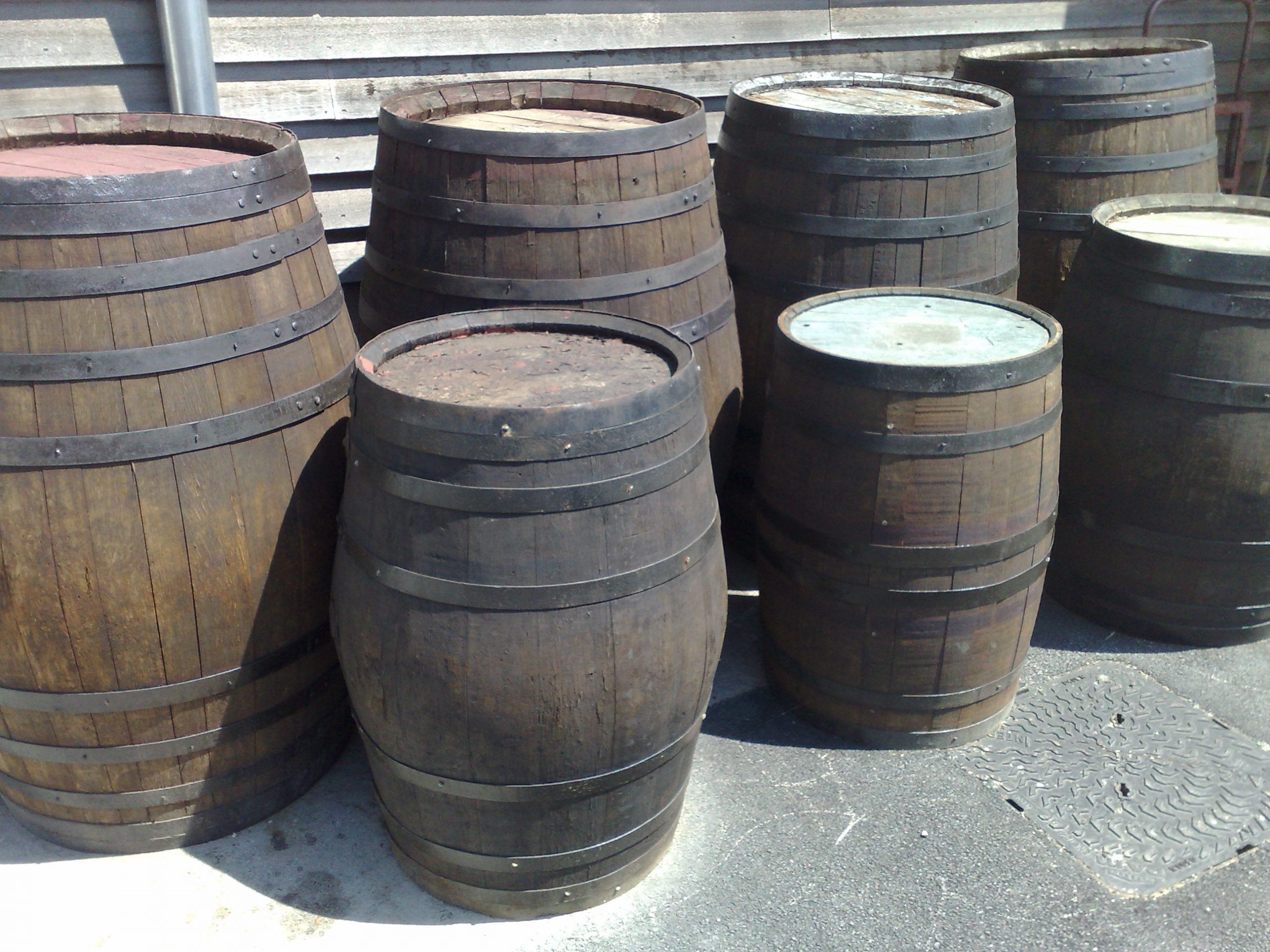Amongst woodworking, the cooper’s craft of making barrels stands unique. The ability to turn wood into a waterproof vessel, capable of holding water or other liquids without any adhesives, requires extreme accuracy and excellent artistry. Yet in times past, this was done with hand tools, working primarily by eye. Today, the art of barrel making by the cooper remains, as those wood barrels are used to make whiskey and wine.
Kinds of Wood for Barrels
The most common wood for making oak barrels is white American oak, specifically American white oak, although the French also make oak barrels using their oak trees.
White American oak contains Tilos, the glue that helps seal the grain in the wood. While white American oak barrels are the preferred wood, red oak, acacia, hickory, maple, redwood, walnut, cherry, and chestnut wood are also used. White American oak is selected for the flavor it infuses into the liquor that is being aged in it.
Bourbon whiskey, in particular, must be aged in new American oak barrels to be called bourbon. In contrast, other types of whiskey can be aged in used American oak barrels that have been reused. Even then, the lifespan of a used American oak barrel is only eight fills, after which they need to be replaced.
Although whiskey and wine are the leading spirits aged in oak barrels, they aren’t the only ones. Scotch whiskey, Irish whiskey, Canadian whiskey, rum, reposado wine, beer, anejo beer, tequila, brandy, and even beer can be aged in wood barrels, either oak barrels made of white oak, used barrels, or oak barrels of one of the other hardwoods mentioned above.
The Cost of Barrel
The cost of these barrels adds to the barrels of spirits, beer, and wine that are aged in them, especially when we consider that a new barrel can cost anywhere from $900 to $2,000. Those oak barrels each hold 53 to 55 gallons of liquor or wine, so at a minimum, they add $3.27 to the cost of a bottle of bourbon or $0.41 to the price of a bottle of wine, assuming the wine is aged in a barrel; not all wine is.
Today, there are somewhere between 1,500 cooperage now and 2,000 coopers worldwide. No school of cooperage in the United States teaches this craft, so one needs to apprentice a cooper at one of the existing cooperies to learn it. Coopers and Cooper are notoriously secretive about their craft to avoid adding to the competition. But in Europe, there are still colleges teaching coopery and cooperage, which requires a three-year course of study, after which there are still three years of apprenticeship before one can be considered a journeyman in cooperage there.
Modern coopery has changed from what it once was in that modern machinery has been brought into the craft. Whereas in the first barrel-making process, a master cooper once had to shape the staves by hand, the cooper, today’s cooperies use specialized machinery to accomplish those tasks. Even so, the process of fitting the stave and assembling temporary new hoops to the barrel is still done by the master cooper by hand. However, the final fitting of the barrel making the new quick hoops is now done by a cooperage, a giant hydraulic press.
Making Barrel Staves
A barrel is primarily a bunch of staves held together. The assembled stave teams must be precisely formed to eliminate the possibility of leaks. The standard barrel size is 21″ at the ends and 26″ in the middle, by 36″ high. To make this, 31 to 33 staves are used, not all the same width. Selecting a set of teams that will fit in the bands, giving the desired full barrel shape and diameter, is part of the barrel-making process.
The stave is shaped a rather complicated shape, geometrically speaking. It is shaped and rounded on both the outside and the inside, across the board’s width. It is shaped and tapered, bending towards both ends, with the center of the shape of the stave being the widest part. At the same time, the sides of the stave must bend and be cut at an angle so that the staves will sit snugly against one another to seal.
It may seem only like a peculiarity of the design French the American oak barrels barrel itself, but the curved profile of the American oak barrel is critical to its sealing correctly. Tapering the two American oak barrels’ staves, forcing them together, and holding them together with hoops provide the pressure necessary to cause the teams to seal against the glass and each other.
If the teams of American oak barrels were straight rather than tapered, it would be impossible to generate the air pressure it needed for the two American oak barrels’ staves to create the necessary seal to the glass to make the barrel watertight.
In olden times, the master cooper cut, or more accurately split, their barrel staves from the oak tree trunks they felled. The wood was broken in a quarter-sawn pattern, so the teams varied in width. To finalize the shape, the stave was shaped with a unique “cooper’s side axe” axe and a drawknife. Those aren’t what anyone would call precision tools, yet the master cooper still used them to produce precision work.
The white oak that most cooperies use today comes from a mill aged between 24 and 36 months. It is not kiln-dried but instead dried in the open air. One coopery refers to the flavor of the wood as “export grade,” meaning that it is pure heartwood flavor wood and has no sap or knots.
That’s important to a cooperage well being and flavor, both from the sense of taste and that leaks can cause the barrel to leak flavor. When selecting wood for barrel making for a cooperage or home, it must be the best, most apparent flavor wood possible.
Fortunately for us today, at least some of the work for shaping the oak staves can be done with power tools rather than by hand. However, some steps require specialized equipment to do them with power tools. For the sake of this article, I will stick to hand tools found in a woodworker’s shop.
Individual staves must be cut to the same length. The length is critical for making a straight barrel. If respective teams should vary in size at all, the barrel maker will likely try how to make a wooden barrel to imitate the Leaning Tower of Pizza during assembly.
For our purposes, the individual staves used should also be the same width, although they weren’t in olden times, nor are they in modern cooperies. To calculate the width of the teams needed for the barrel maker, divide the circumference of the barrel by the number of units. Then rip all the teams’ squads to that width.
After planning the boards to be 1″ thick, the inside of the staves must be rounded and convex. This step would be done with equipment not found in a home workshop, either a shaper or a molding cutter, so we’re limited to doing this with a radius spokeshave. The curvature doesn’t have to be exact, as nobody will see it, but the concave inner surface is necessary to ensure the barrel’s volume when completed. The outside of the staves is then shaped convex with a straight spokeshave. It doesn’t have to be shaped perfectly because the finished barrel will be sanded to make the outside smooth, but the closer it is to the correct curvature, the easier it will be to fit the finished barrel together and the hoops over the ends.
Tapering the staves and angling the cut is pretty easy in the home workshop, as long as a router table is available. That’s going to take the place of a specialized CNC joiner. Start by making a template for the curvature of the staves, which will form the desired barrel profile.
This is one of those trade secrets that coopers don’t share, but the angle of the taper is only about six degrees. In addition to the template and a straight bit with a bearing, it will be necessary to create a jig that alters the angle of the table.
So what angle is needed for the mating edges of the staves? That depends on the number of teams. If we divide 360 degrees by 33 barrel staves, we get 10.9 degrees. If we weren’t using the same width staves, the two wider stave teams would need to be at a slightly greater angle, while the narrower ones would need to be at a lesser grade. But for simplicity’s sake, we can stick with one quality since we’re using all the same width staves.
When attaching the template to the staves and routing the top toasting stave edges to taper them and cut the edges at an angle, take extreme care not to miss any material from the middle of the staves. The width of wider teams has already been calculated and must be maintained. This is the single most critical part of the process.
Assembling the Staves into a Barrel
Once the staves have been cut, it’s time to assemble the barrel. This is still done by hand in modern cooperies, using much the same tools and techniques as have always been used. Besides not having hydraulic presses to help us, we will use the same methods.
Coopers typically have a set of working hoops for every size barrel or cask they build. These differ from the rings that become a permanent part of the barrel in that they are welded rather than riveted together. End welding eliminates the step in the circle and the rivet heads that are part and parcel with a riveted hoop. The smoother inside makes it easier to assemble the barrel. Once the barrel is completed, these hoops are removed and replaced with riveted ones.
Lay out the staves side by side, measuring to ensure that the overall width of called teams matches the desired circumference of the middle of the barrel. At this point in the seasoning process, commercial barrel makers use a jig to hold the end hoop and the staves as they set them in place. The assembly jig is like a round metal basket, allowing all the teams to be placed and held there. Once in place, a strap clamp is placed around the loose end to have it while the barrel is removed from the assembly jig.
Making a wooden barrel and assembling the staves without that jig is still possible. Rather than placing the end hoop on the ground, it is held in one hand at the top end of the wooden barrel while the staves are identified in the other hand.
Once all the staves are placed, a second, larger hoop is driven farther down them, pushing them together and shaping that end of called teams and the wooden barrel called staves into its final form. It is necessary to hammer the hoops down the sides of wider wooden barrels and staves, using a weighted hammer and a hoop driver, somewhat similar to a large cold chisel that has been ground blunt, to press the edges of the assembled staves together.
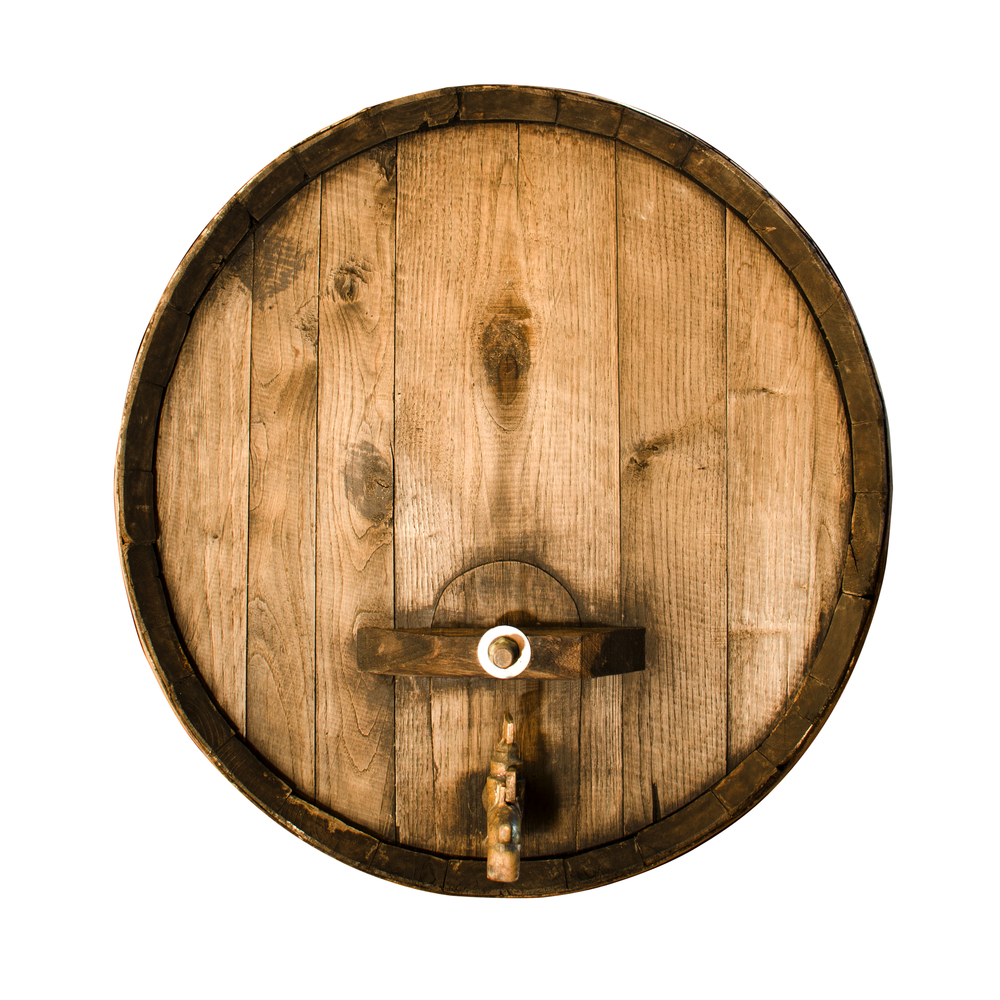
The Process of Making the Wooden Barrel
As part of this process, the tops of the two oak barrels, chips, and staves are hammered, too, causing them to sit against the floor and evening up the barrel. At the same time, the cooper needs to hit the inside of any boards that are inset from the hoops rather than pushing out against them.
During this process, it is not uncommon for the wine barrel to start out leaning before this process, but as the tops of the white oak chips of wine barrels and the oak staves are hammered, and the hoops are driven down the barrel, the barrel straightens up.
This is the only person where the trained eye of an experienced cooper makes a difference, as they will see which bent staves are problems with making barrels and know how to adjust the stave for them. Ultimately, all three pieces of the teams must be adequately seated against each other, with the stave ends exactly even, for the barrel to seal.
While bringing the staves together on the first side of the shape of the wood, how to make a wooden barrel again is relatively straightforward, that can’t be said about the second side. Because the staves are all tapered, the circle is made by the ends of the shape of the wood. To bend and glue the teams together for that end of the body of the how-to, make a wooden barrel again. Heat is needed.
Heat bending is joint in woodworking, such as making string instruments. For example, the curved sides of a guitar body are curved with heat. Heat is also used in some bentwood operations.
The big difference here is that the entire barrel must be heated simultaneously, as all the staves must be bent simultaneously. This is accomplished by putting a gas burner inside the barrel.
As best as I can tell, no such device is available commercially, and the owner of one coopery stated in a video that those used by cooperies are all custom-made. The closest thing we can find on the open market would be a gas burner for cooking or smelting, perhaps the gas burners used for deep frying turkeys. Some coopers use water during this process, dipping the barrel or spraying it on it, while others do not.
The barrel is placed over the heater’s fire so that the heat of the fire from it is inside the barrel, leaving it to heat until the outside temperature of the fire in the barrel is 300°F. Once that fire temperature in called staves is reached, a band clamp is placed around it, and air pressure is used to pull the teams together.
This is typically a band clamp using steel cable rather than nylon webbing, but I believe a band clamp with a nylon strap will work. The melting temperature of nylon is 515.9°F, considerably higher than the temperature of fire that the wood is warmed up to.
Once the stave of the barrel is warm enough to bend and the strap clamp is applied to bring the ends of the staves together, the end hoop is put on that bent end of called staves of the barrel.
With that hoop in place, the strap clamp can be removed and the other band put in place, hammering it down to compress the staves together, just as was done on the first end. The only difference is that many teams do not need to be hit to even them up, as they should already be in barrel shape anyway.
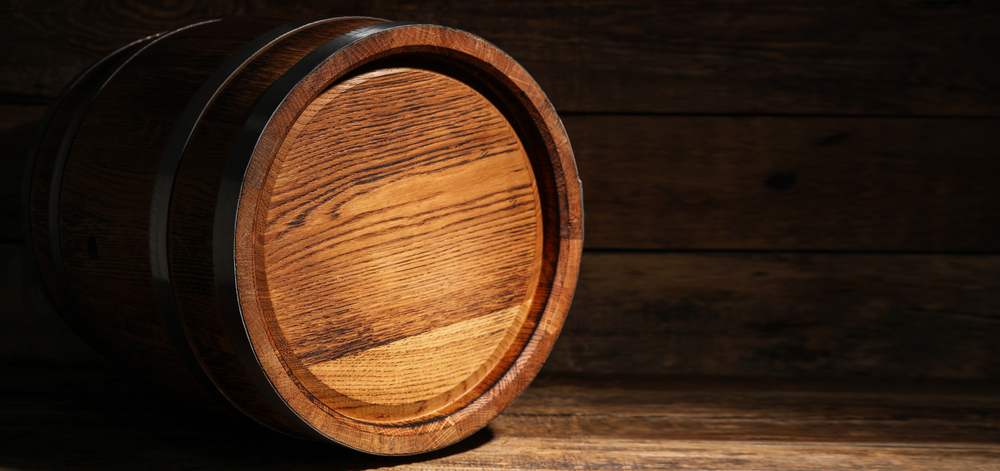
Assembly
The assembled oak staves and three pieces of oak chips in the same toasting barrel are then put back over an open fire on the burner to “toast” them. The easiest way to think of this is like smoking a piece of toast at home. Toasting the wood caramelizes it, breaking down the hemicellulose in the wood to convert it into sugars that will be absorbed into the aged spirits in the toasting barrel.
If the toasting oak barrel is used for whiskey, the inside is charred, converting the inner surface to charcoal. This layer of charcoal acts as a filter, removing impurities from the fermenting whiskey. Wine barrels are not charred, only toasted.
Once the toasting and charring are completed, temporary hoops on the barrel-making part must be set aside to cool. Further work at this point in the seasoning process and barrel-making processes will allow the staves to lose their curve. Only when cooled will it be safe to remove the temporary hoops and continue working on the barrel-making again.
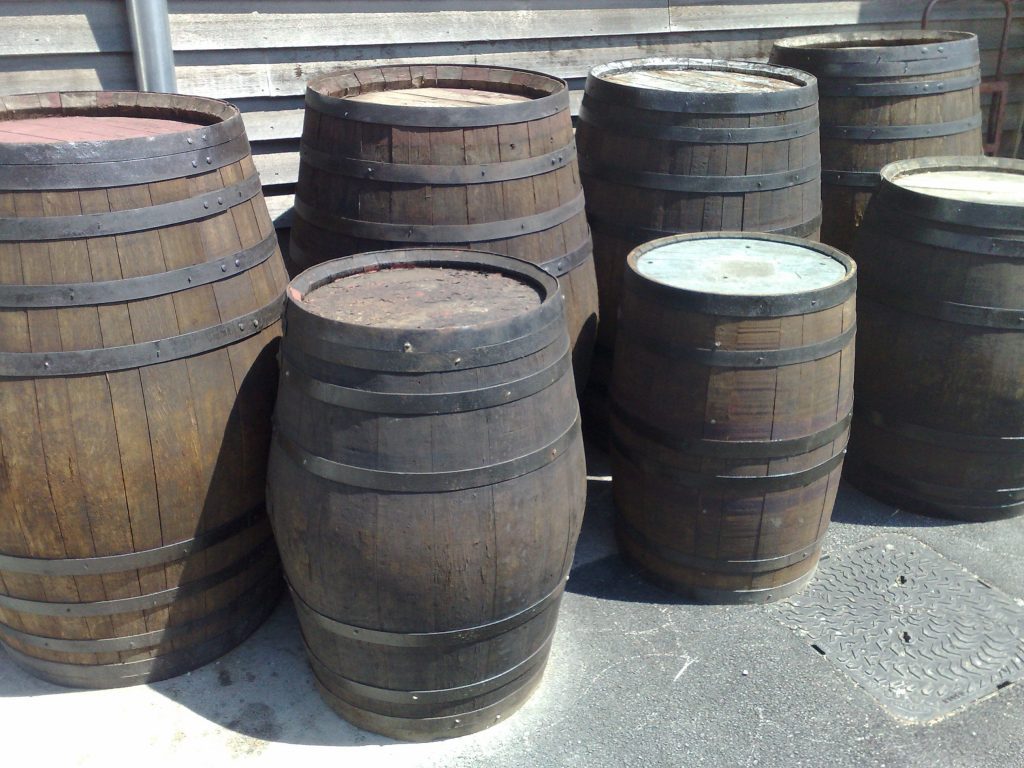
Wooden barrels, James F Clay
Adding the Wooden Barrel Heads and Finishing
Caution: Removing all hoops simultaneously is dangerous, as the barrel will fall apart. Any work done from this point on, where I mention removing temporary rings or circles, only refers to removing one or two temporary hoops or loops, only one person, or only person, or, at the most, two quick rings (out of four) at a time.
The barrel must be sanded smooth outside the hoop driver to ensure the hoops make good contact around their inner perimeter. This is accomplished by removing individual circles and sanding, usually with a belt sander. After finishing one part of the wooden barrel, the ring is reinstalled and tightened before another round is removed.
A groove, called a croze, must be cut into the inside of the barrel, on both sides, for the barrel head to sit into. In olden times, this was a two-step process done with special planes. The first step in the process was to flatten the inside of the ends of the barrel, thinning them out slightly.
The plane used for this is called a chiv or howell. Once that is in place, a tool called a croze is used to cut the slot, also called a croze. Today, we can do that with a router, using a straight bit with a guide on the outside of the barrel in place of the chiv and a slot cutting bit with a bearing in place of the croze.
It would also help to use a round-over bit to radius the groove back, toasting the inner edge of the barrel end, making it easier to insert the barrel head.
The barrel heads of Cooper are made of edge-joined boards, ¾” thick, but they are not edge glued. Just as glue must be avoided for the bond on the oak staves part of the oak barrel so that they don’t get into the contents of the French oak can, the bond must be avoided for the wood heads of the wooden can barrel chairs. So the boards must either be dowelled together or edge routed in a pattern that will take glue and provide a tight, interlocking joint. One of the coopers of coopery in the country uses what is known as a “double z groove” to take glue to join the boards together.
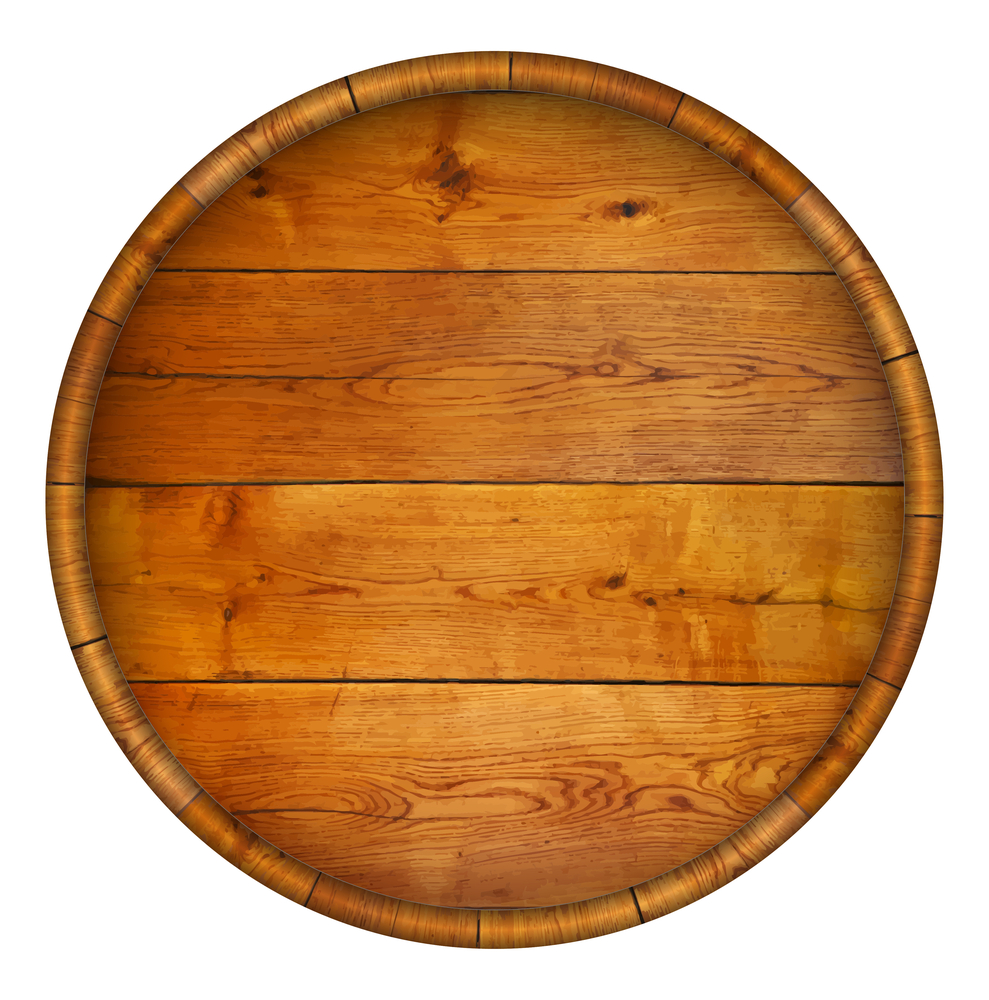
When cutting out the barrel head, the outside diameter must fit precisely in the croze, allowing the barrel heads and staves to press in on the head, pushing the edge joints together. At the same time, the barrel head cannot be oversize, as it will push out against the staves, causing gaps for the contents to leak out of. The edges of the barrel head are also tapered.
Something else can be done on the router table to end up the exact width as the croze, ensuring a watertight fit. The inside of the barrel head should be toasted and charred as needed to match the rest of the barrel. This can be done over an open fire.
With the barrel heads made and toasted or charred, the hoops are removed from one end of the barrel, and the director is tapped lightly into place. The rings that will be part of the wooden barrel are then installed on that end, hammering them into place. New rings and bands are pressed into place in commercial operations with a vast, custom-built press.
Compared to all the precision that goes into the making of the barrel, the hoops have more leeway in their cutting and manufacture than anything else. If a ring is 1/8″ too long, it won’t affect the function of the barrel. It will just need to be pounded a bit farther down the barrel.
Nevertheless, commercial cooperies use as much precision in making their new hoops and barrels as anything else to have a consistent appearance. Once the new hoops, rings, and barrels are in place, tacks are driven through them to help keep the barrels behind them from slipping.
The hoop is a band of steel strapping. The edges must be deburred or slightly rounded to make them safe for handling. Four holes are drilled in the strap, one pair at each end. Then the belt is bent.
This bend can be done by hammering and bending temporary hoops over a round arbor (or round pipe held in the shape of a vice) or by turning with a roller bender. The holes are used for riveting the ends of the hoops together with hammered rivets (not pop rivets).
With the new hoops installed, the oak barrel is ready for the final step in the process. A 1-7/8″ to 2″ bunghole is filled in the side of the French and American oak bottom, barrels, and barrel heads.
This differs from plastic or metal barrels, which typically have a bunghole in the head.
The bung hole is seared into French and American oak barrels and barrel bottom with a hot iron, sealing the end grain in the wood so that the contents won’t soak.
The finished barrel needs to have some water put into it to test it for integrity. If not filled immediately with spirits, some water should be kept inside to prevent the wood from drying out.
If the wood were to dry out, it would shrink, possibly resulting in a leaky barrel. However, if that were to happen, the problem could be solved by filling the barrel with water and allowing the wood to soak up the water and swell.

